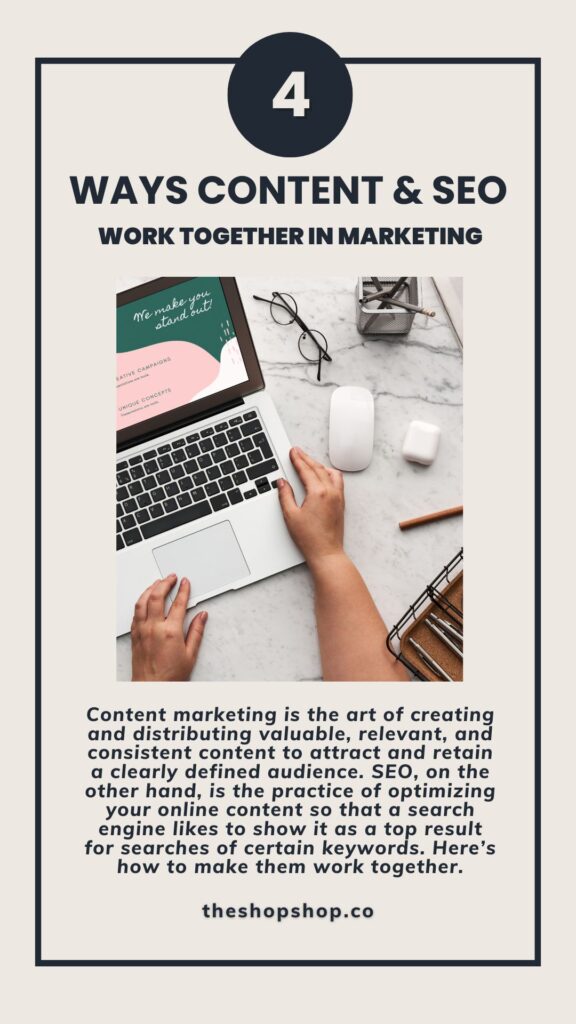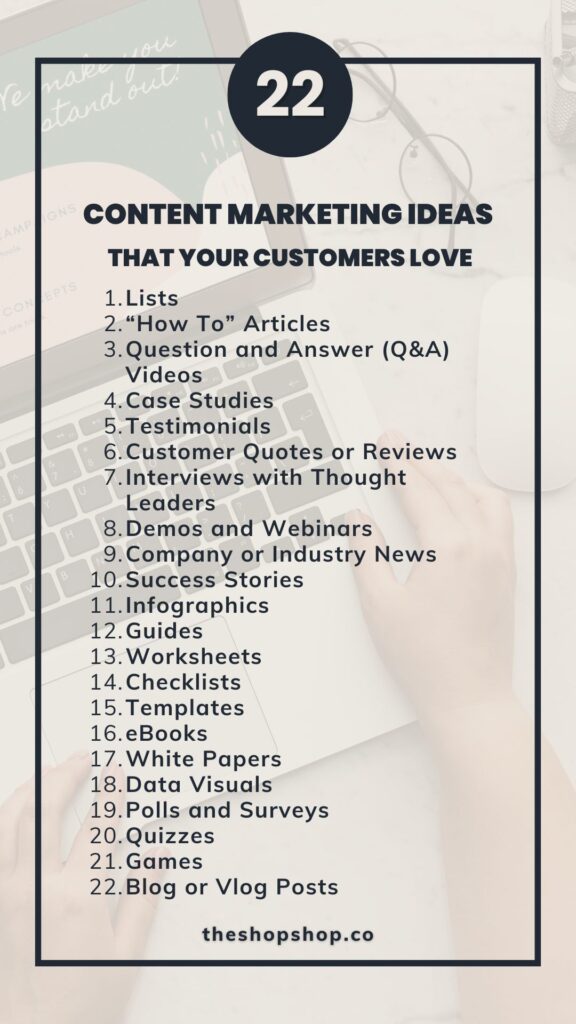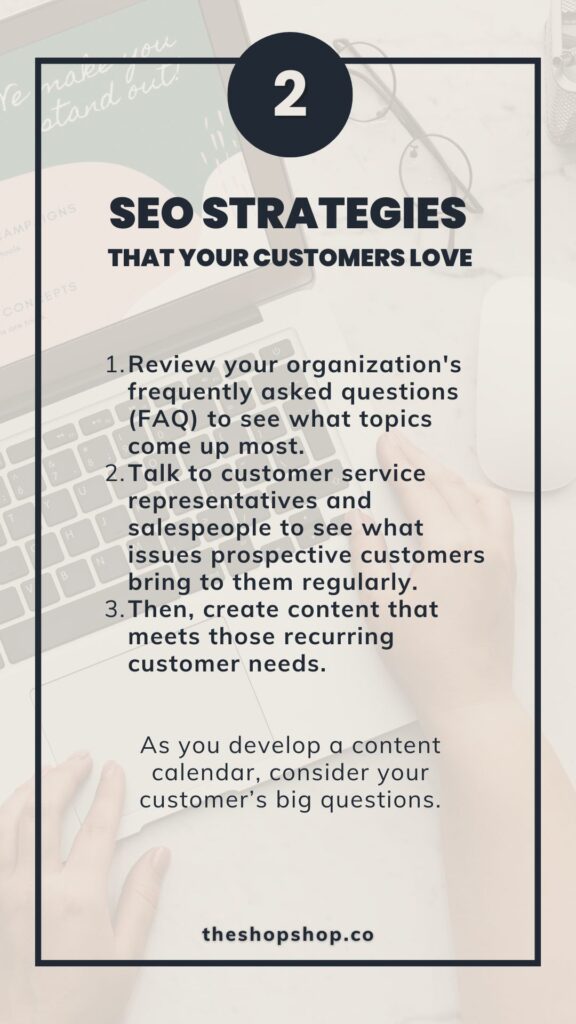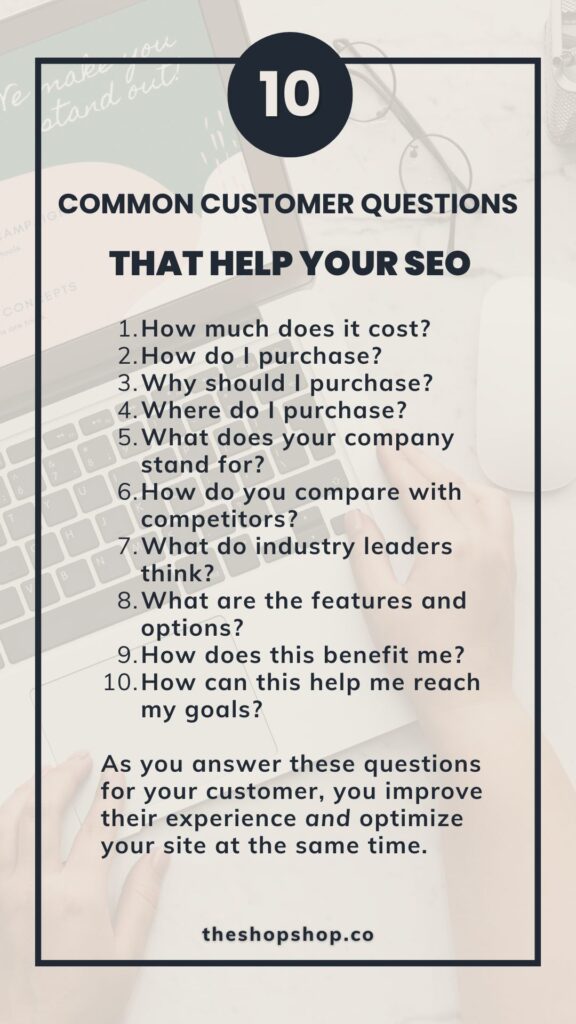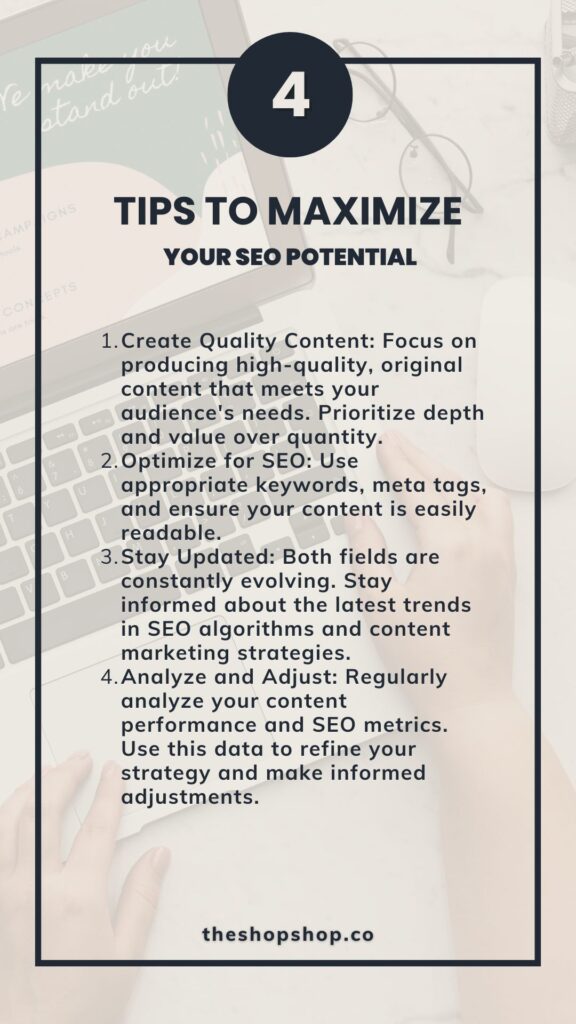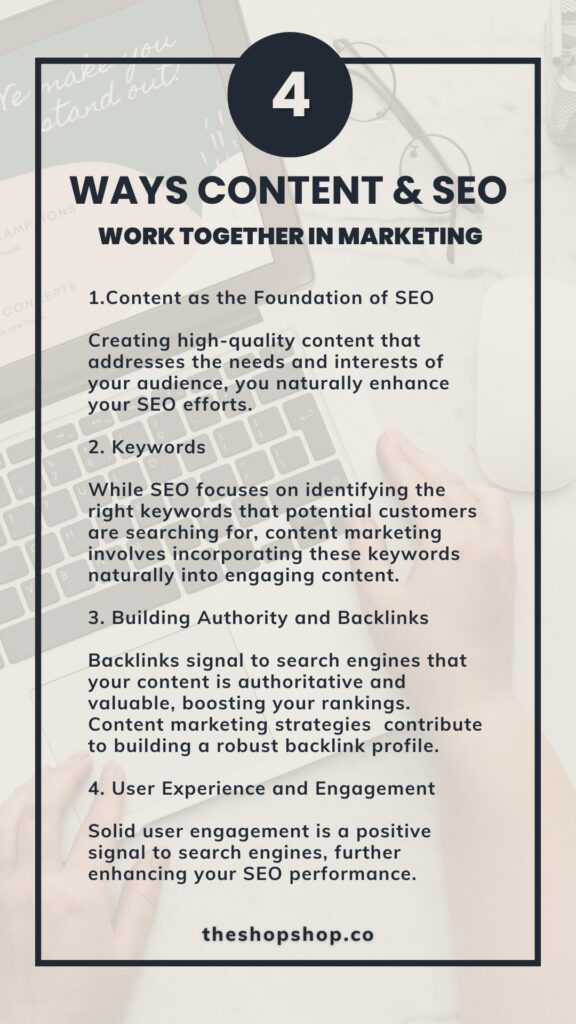Influencing prospective customers starts with content marketing. As part of your inbound marketing strategy, you can:
- generate more traffic
- convert more leads
- and create more customers
This is why 28% of marketers have reduced their digital advertising budgets to produce more company-specific content. They understand that influencing prospective customers requires a focus on content marketing. When your customers get advice from you during their buying process they begin to trust your brand. This positions your small business as the top choice when your target customer is ready to purchase.
How Content Marketing Works
Creating a content marketing strategy requires an understanding of how inbound marketing and content marketing work together. Content marketing requires creating and distributing online materials that stimulate interest in products and services. They do not sell a brand directly. Rather they educate or entertain. Examples of content marketing include articles, social media posts, videos, and blogs.
Inbound marketing attracts customers through unique content. This contrasts traditional outbound marketing strategies such as advertisements and press releases. Essentially, this strategy attempts to answer customer’s needs when the customer begins their search. While an inbound marketing strategy includes content marketing tactics, it can extend beyond those tools and methods to website design, search engine optimization, and pay per click advertising.
Many small businesses have adopted these methods and strategies because they target customers at influential stages in their buying journey.
The numbers prove the strategy works. Although content marketing costs 62% less than traditional marketing, it generates approximately triple the number of leads. For example, small businesses with blogs receive 126% more lead growth compared to similar businesses without blogs.
So, businesses that want to attract new customers adopt content marketing as part of their inbound marketing strategy.
In today’s digital landscape, businesses and individuals alike are vying for attention in a crowded online space. To stand out, it’s crucial to embrace strategies that drive visibility and engagement. Two powerhouse strategies that have become essential are content marketing and search engine optimization (SEO). While distinct in their own right, these two strategies are deeply interconnected, each amplifying the effectiveness of the other.
Understanding Content Marketing
Content marketing is the art of creating and distributing valuable, relevant, and consistent content to attract and retain a clearly defined audience. It’s not just about promoting products or services; it’s about building trust and establishing authority by providing your audience with information they find useful or entertaining. Formats can range from blog posts and videos to podcasts and infographics.
Deciphering Search Engine Optimization
SEO, on the other hand, is the practice of optimizing your online content so that a search engine likes to show it as a top result for searches of certain keywords. It involves both technical and creative elements required to improve rankings, drive traffic, and increase awareness in search engines. SEO is about making sure your website is structured in a way that search engines understand.
The Symbiotic Relationship
The relationship between content marketing and SEO is symbiotic, meaning they work best when they work together. Here’s how:
1. Content as the Foundation of SEO
Content is the backbone of SEO. Search engines aim to provide users with the most relevant and valuable information. By creating high-quality content that addresses the needs and interests of your audience, you naturally enhance your SEO efforts. This involves using targeted keywords, crafting engaging headlines, and ensuring your content is informative and well-structured.
2. Keywords: The Common Ground
Keywords are the bridge between content marketing and SEO. While SEO focuses on identifying the right keywords that potential customers are searching for, content marketing involves incorporating these keywords naturally into engaging content. This helps in ranking higher on search engine results pages (SERPs) and attracting organic traffic.
3. Building Authority and Backlinks
High-quality content is more likely to be shared and linked to by other sites, which is a critical factor in SEO. Backlinks signal to search engines that your content is authoritative and valuable, boosting your rankings. Content marketing strategies often include guest blogging, influencer collaborations, and creating shareable content, all of which contribute to building a robust backlink profile.
4. User Experience and Engagement
SEO isn’t just about technical optimizations; it’s also about providing a good user experience. Great content keeps visitors engaged, reducing bounce rates and increasing time spent on your site. This user engagement is a positive signal to search engines, further enhancing your SEO performance.
Crafting a Harmonious Strategy
To maximize the potential of both content marketing and SEO, consider the following tips:
- Create Quality Content: Focus on producing high-quality, original content that meets your audience’s needs. Prioritize depth and value over quantity.
- Optimize for SEO: Use appropriate keywords, meta tags, and ensure your content is easily readable.
- Stay Updated: Both fields are constantly evolving. Stay informed about the latest trends in SEO algorithms and content marketing strategies.
- Analyze and Adjust: Regularly analyze your content performance and SEO metrics. Use this data to refine your strategy and make informed adjustments.
While content marketing and SEO can be pursued separately, their true power is unlocked when they are integrated. By understanding their unique roles and how they complement each other, you can create a more effective digital marketing strategy that not only attracts but also retains and converts your audience.
Directing Your Customer’s Journey
Typically, the customer’s journey moves through four key steps. First, customers experience a need, known as awareness. This leads them to the next stage which includes a search for information. Second, customers move to interest. During this step, customers find information about products, brands, or services. Third, they enter the consideration step. The customer compares competing organizations, reviewing information that helps them make decisions. Finally, they become a customer.
As prospective customers enter the interest stage, your business has the opportunity to both engage and influence them using content marketing.
First, you can provide useful, educational information to help their search. Second, you can delight customers with unique content.
You can see why 48% of marketers support the customer’s journey with specialized content.
That specialized content should be built around common customer questions to help them evaluate your company, product, or services.
Common Customer Questions
- How much does it cost?
- How do I purchase?
- Why should I purchase?
- Where do I purchase?
- What does your company stand for?
- How do you compare with competitors?
- What do industry leaders think?
- What are the features and options?
- How does this benefit me?
- How can this help me reach my goals?
As you answer these questions for your customer, you build trust with them. Soon, they’ll start to see your small business as a helpful, generous entity — because you focus on meeting their needs. This creates customer satisfaction over both the short and long term.
Create Customer Satisfaction
Both prospective and current customers appreciate brands that focus on their satisfaction. This often referred to as customer delight. Small businesses can create this satisfaction through content marketing when they solve customer pain points.
As you develop a content calendar, consider your customer’s big questions.
- Review your organization’s frequently asked questions (FAQ) to see what topics come up most.
- Talk to customer service representatives and salespeople to see what issues prospective customers bring to them regularly.
- Then, create content that meets those recurring customer needs.
Achieve Your Inbound Marketing Goals
Content marketing can help you reach your inbound marketing goals in conjunction with your other strategies. Your inbound requires useful, engaging content to both attract and convert new leads.
So, review your website and look for areas where you can generate content that customers crave.
Content Marketing Ideas:
- Lists
- “How To” Articles
- Question and Answer (Q&A) Videos
- Case Studies
- Testimonials
- Customer Quotes or Reviews
- Interviews with Thought Leaders
- Demos and Webinars
- Company or Industry News
- Success Stories
- Infographics
- Guides
- Worksheets
- Checklists
- Templates
- eBooks
- White Papers
- Data Visuals
- Polls and Surveys
- Quizzes
- Games
- Blog or Vlog Posts
Each of these types of content can be customized to your target audience to aid them during the consideration phase of their journey. Then, you will be able to influence them toward your products or services because they trust your brand.
Final Thoughts
When you start looking at your customer’s needs, you will probably find a host of topics and questions around which you can build engaging content. Adopting content marketing as part of your inbound marketing strategy is a rewarding process. The only limit is your creativity and imagination.
I love to hear from readers about your business. If you like this article, please share it on social media.
Understand Shopping Trends
We’re dropping our next newsletter in July 2025. Sign up for exclusive freebies, giveaways, and industry insights.

